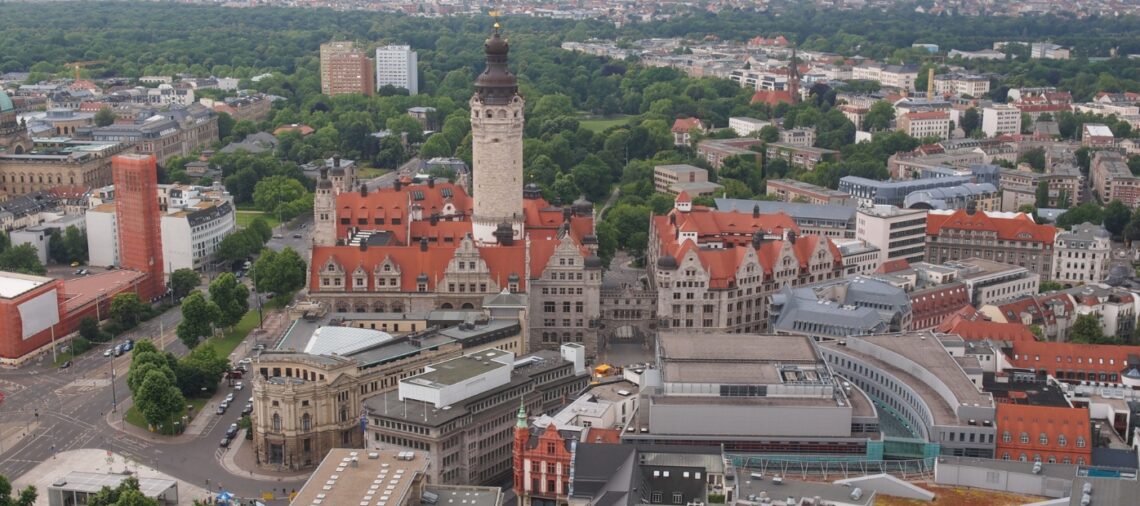Leipzig is a vibrant and historic city in the east of Germany, often called the “New Berlin” for its cultural and creative scene. Leipzig has a rich history, dating back to the Middle Ages, when it was a major trade center and a hub of music, art, and literature. Some of the famous figures who lived or worked in Leipzig include Johann Sebastian Bach, Felix Mendelssohn, Richard Wagner, and Johann Wolfgang von Goethe.
Leipzig is a city that combines history and modernity, tradition and innovation, culture and fun. It is a place that will surprise and delight you with its charm and diversity. If you are looking for a destination that offers something for everyone, Leipzig is the perfect choice. So, let’s find out what things to do in Leipzig in a charming visit.
1 Explore the Historic St. Thomas Church
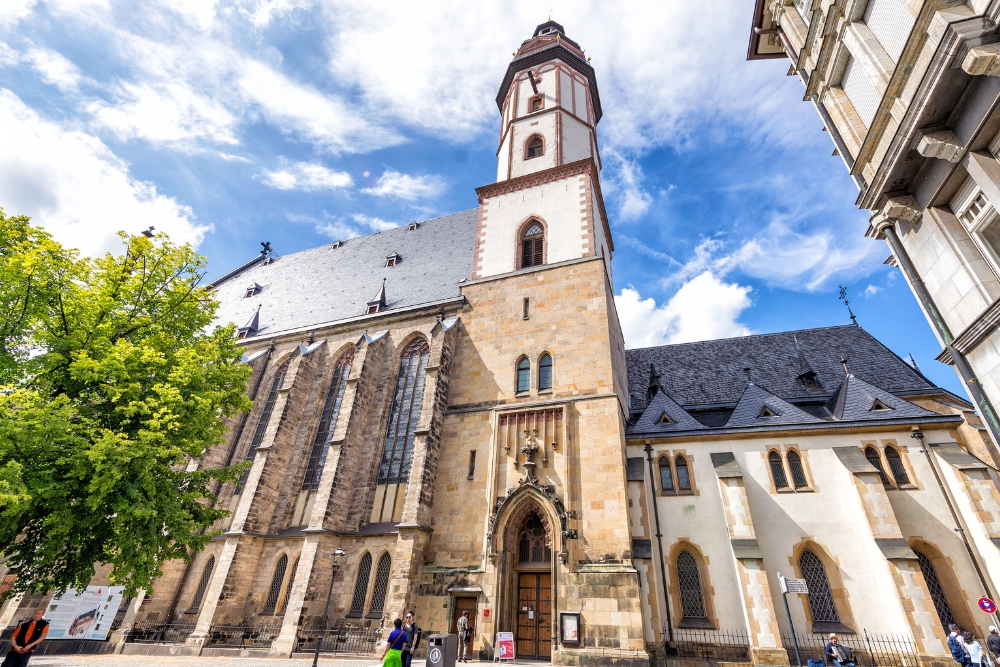
Here is one of the places to see in Leipzig where history, music, and spirituality converge: the St. Thomas Church in Leipzig, Germany. This magnificent Gothic hall church in the city’s heart has witnessed many pivotal events and personalities shaping German and European history. From Martin Luther’s fiery sermons to Johann Sebastian Bach’s sublime compositions, from the peaceful revolution that toppled the Berlin Wall to the vibrant cultural scene of today, the St. Thomas Church has seen it all.
The St. Thomas Church is a treasure trove of historical and artistic significance and a living and active community of faith and service. You can join the regular worship services and motet concerts featuring the world-renowned St. Thomas Boys’ Choir, which traces its origins back to 1212. You can also climb the 68-meter-high tower and enjoy a panoramic city view. Or you can simply marvel at the beauty and tranquility of the church’s interior, where you can find Bach’s tomb, the Mendelssohn portal, and the stunning stained glass windows. Whatever you choose to do, you will surely be inspired and enriched by your visit to the St. Thomas Church.
2 Visit the Monument to the Battle of the Nations
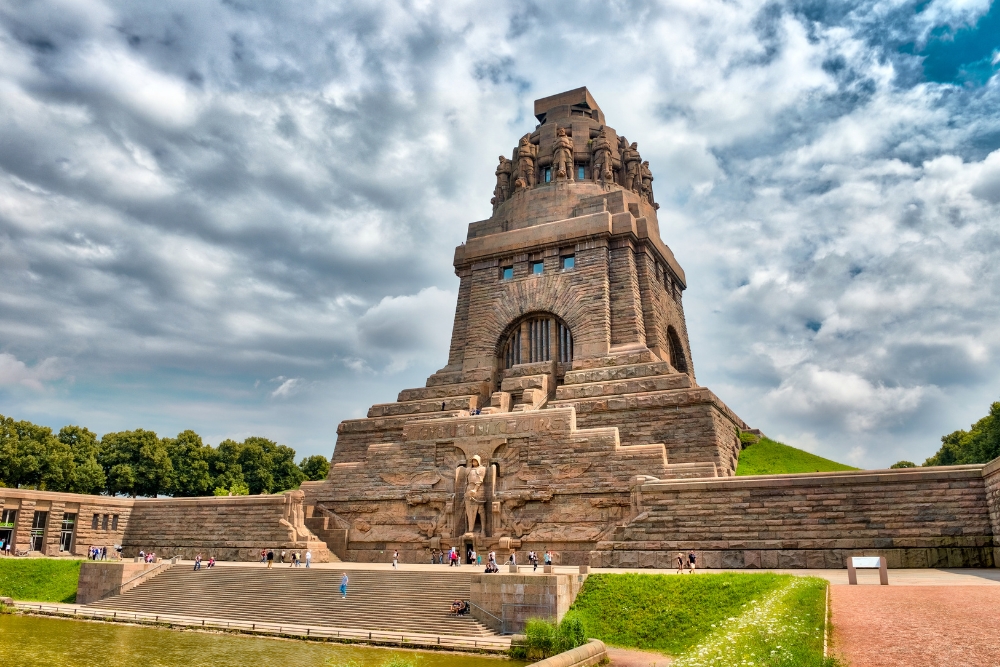
Looking for a monumental experience in Leipzig? Then, you should not miss the Monument to the Battle of the Nations (German: Völkerschlachtdenkmal), one of the most important Leipzig attractions. This colossal structure, completed in 1913, commemorates the 1813 Battle of Leipzig, also known as the Battle of the Nations, where a coalition of European forces defeated Napoleon’s army. The monument is 91 meters tall and features impressive sculptures, crypts, and a platform that offers panoramic views of the city and its surroundings.
The monument is a tribute to the fallen soldiers of the battle and a symbol of peace, unity, and fantasy architecture. You can explore the monument’s interior, where you will find eight statues of medieval knights, four giant figures representing the virtues of courage, faith, sacrifice, and strength, and a hall of fame with a dome decorated with a mosaic of stars.
You can also climb the 500 steps to the top of the monument, where you will be rewarded with a breathtaking vista of Leipzig and the artificial lake in front of the monument, known as the “Lake of Tears”. The monument is open daily from 10 a.m. to 6 p.m., and the admission fee is 6 euros.
3 Stroll Through the Leipzig Zoo
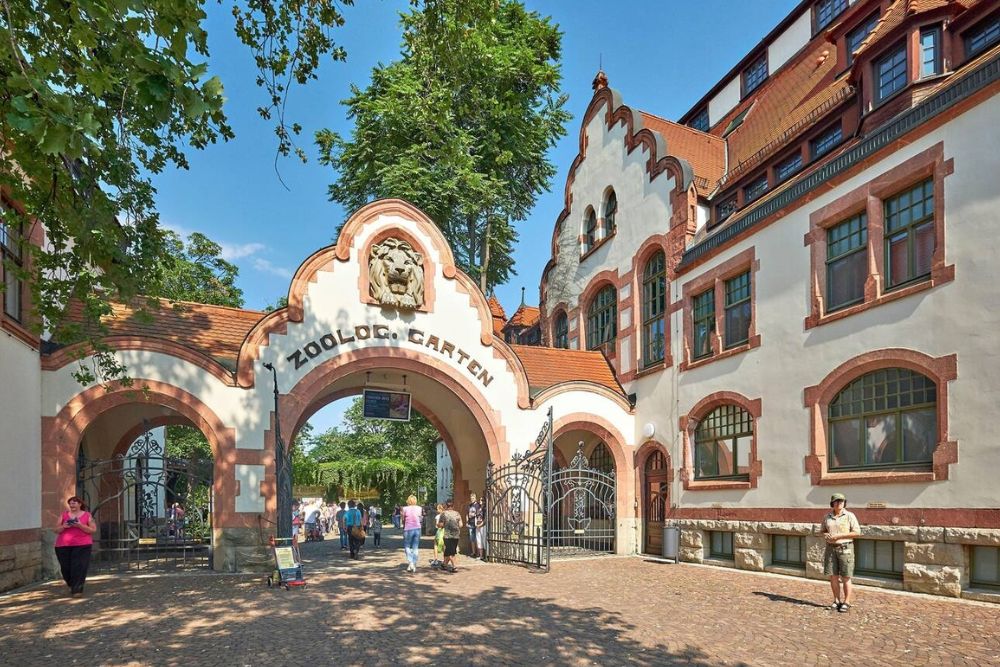
If you are an animal lover, you will enjoy a stroll through the Leipzig Zoo (German: Zoologischer Garten Leipzig), one of the oldest and most diverse zoos in Germany. The zoo was opened in 1878 and now covers about 27 hectares (67 acres) and contains approximately 850 species. You can explore six authentic theme worlds, such as Africa, Asia, South America, Gondwanaland, Pongoland, and Founder’s Garden, where you will encounter exotic animals in naturalistic habitats, such as lions, elephants, giraffes, pandas, gorillas, and more.
The Leipzig Zoo is not only a place to admire wildlife but also a place to learn about nature and its challenges. The zoo is involved in various conservation projects, such as the Team Leopard Leipzig, which supports the protection of snow leopards in Central Asia. You can also join guided tours, workshops, and events to discover more about the zoo’s history, animals, and missions. The zoo is open daily from 9 a.m. to 5 p.m., and the admission fee is different winter/summer – you can check it here.
4 Discover Art at the Leipzig Museum of Fine Arts
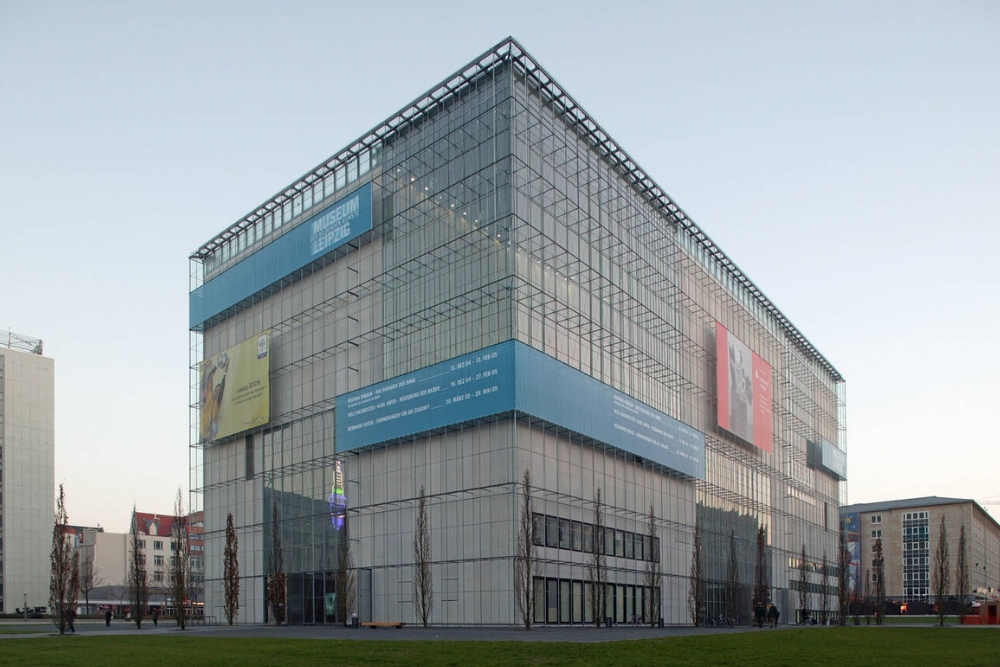
If you are passionate about art, you will love discovering the Leipzig Museum of Fine Arts (German: Museum der bildenden Künste Leipzig), one of Germany’s oldest and most diverse museums. The museum was founded in 1848 by citizens of Leipzig who donated their private collections of paintings, sculptures, drawings, and prints. The museum covers artworks from the late Middle Ages to modernity, focusing on the art of the “New Leipzig School”. You can admire masterpieces by artists such as Lucas Cranach the Elder, Caspar David Friedrich, Max Klinger, Max Beckmann, Neo Rauch, and many more.
The museum is housed in a striking glass cube, designed by Berlin architects Hufnagel / Pütz / Rafaelian, that stands out from the surrounding buildings1. The museum offers a generous space for exhibitions, events, and education, as well as a library, a café, and a shop. You can explore six authentic theme worlds: Medieval Art, Old Masters, 19th Century Art, Modern Art, Contemporary Art, and Graphic Art.
You can also join guided tours, workshops, and lectures to learn more about the museum’s history, collections, and missions. The museum is open from Tuesday to Sunday, from 10 a.m. to 6 p.m.; the admission fee is 10 euros for adults and 5 euros for students.
5 Roam the Leipzig Botanical Garden
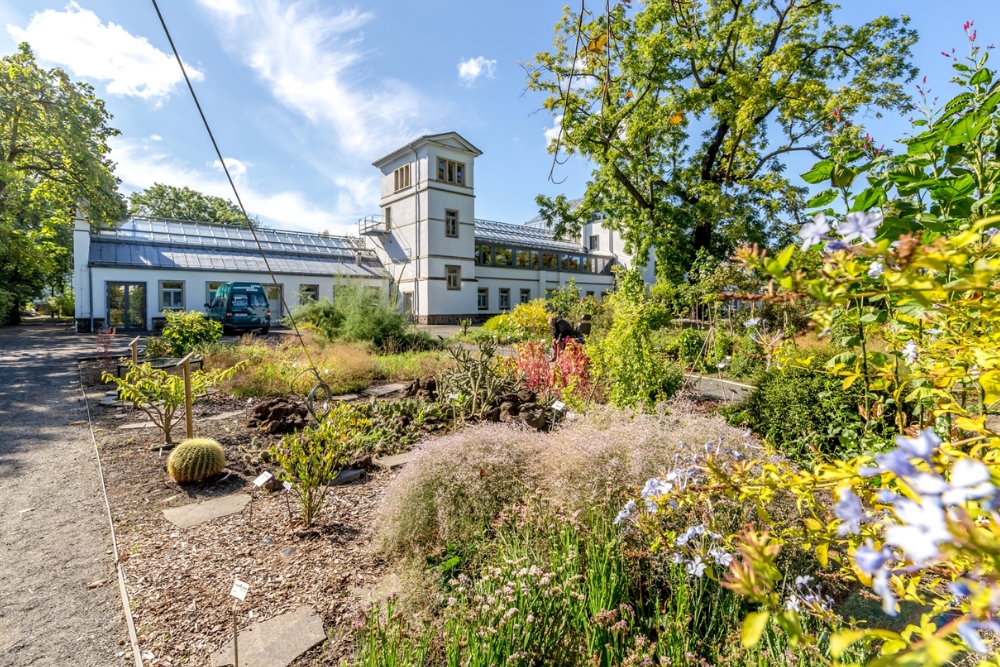
If you are looking for a green oasis in the heart of Leipzig, Germany, you should visit the Leipzig Botanical Garden (German: Leipziger Botanische Gärten, Botanischer Garten der Universität Leipzig). This 3.5-hectare garden, maintained by the University of Leipzig, is the oldest botanical garden in Germany and among the oldest in the world, dating back to at least 1542. The garden is open daily without charge and contains about 7,000 species of plants from different regions and climates.
The garden offers a variety of attractions for visitors of all ages and interests. You can explore six thematic areas such as the Central Garden, the Apothecary Garden, the Fragrance and Touch Garden, the Alpine Garden, the Marsh and Pond, and the Systematic Garden, where you will find plants arranged according to their evolutionary relationships, medicinal uses, sensory qualities, or geographic origins.
You can also enjoy the greenhouses’ tropical and subtropical plants, the butterfly house’s colorful butterflies, and the curious plants in the Kuriositätenpfad (Curiosities Path). You can also join guided tours, workshops, and events to learn more about the garden’s history, collections, and missions.
6 Experience the Panometer Leipzig
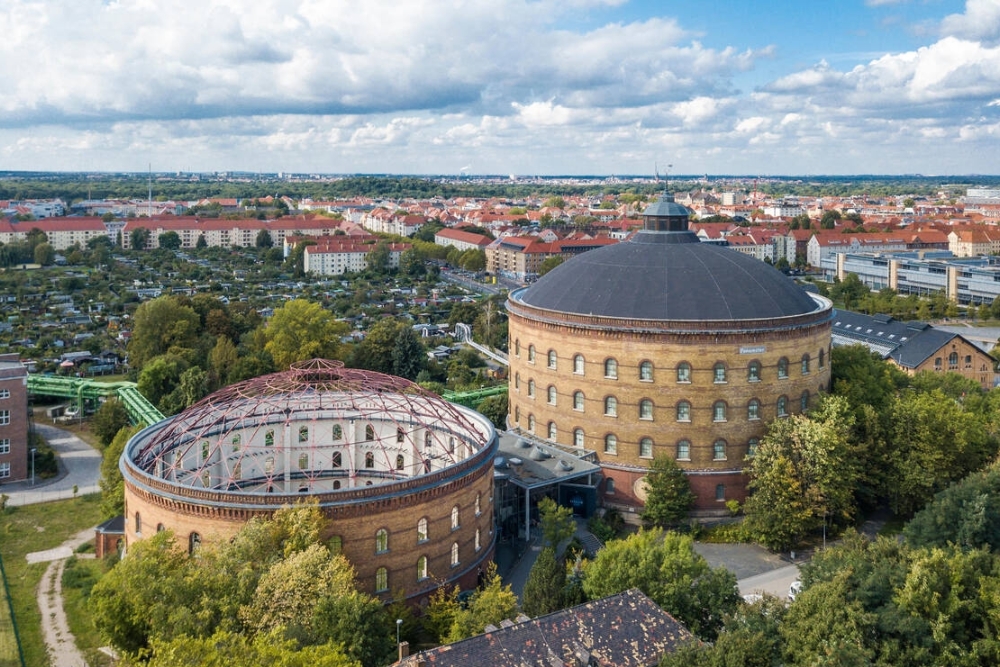
Suppose you want a unique and immersive experience in Leipzig, Germany. In that case, you should visit the Panometer Leipzig (German: Panometer Leipzig). This museum showcases the world’s largest 360° panorama of New York by artist Yadegar Asisi and other exhibitions and events. The museum is in a former gasometer, a cylindrical structure that stores gas. It offers a spectacular view of the cityscape of New York before and after the 9/11 attacks. The panorama is 32 meters high and 105 meters in circumference and is accompanied by light and sound effects that create a realistic atmosphere.
The Panometer Leipzig is not only a place to admire the artistic vision of Asisi but also a place to learn about the history and culture of New York and the impact of 9/11. The museum features a thematic exhibition that explores the topics of terrorism, security, and freedom, as well as the architectural and social aspects of the city. Watch a making-of-film that reveals the creative process behind the panorama and join guided tours, workshops, and lectures to discover more about the museum’s history, collections, and missions. The museum is open daily from 10 a.m. to 5 p.m. and the admission fee is 14 euros for adults and 7 euros for children (2024).
7 Shop at the Old Leipzig Trade Fair
If you are looking for a shopping experience with a historical flair, you should visit the Old Leipzig Trade Fair (German: Alte Messe Leipzig), the former site of the world’s largest trade fair, which dates back to the 12th century. The Old Trade Fair covers about 50 hectares (120 acres) and contains 25 halls, some listed as historic monuments. You can find a variety of shops, restaurants, and services on the grounds, as well as an indoor football (soccer) hall and a figure skating rink.
The Old Trade Fair also offers some attractions for visitors interested in Leipzig’s history and culture and the trade fair. You can admire the impressive facade and interior of Hall 12, which was renovated in the style of 1930s Moscow architecture, and the iconic “Double M” logo, which stands for “Muster Messe” (Samples Trade Fair). Explore the thematic exhibition in Hall 14, which showcases the development and achievements of the Leipzig Trade Fair from its origins to the present day. The Old Trade Fair is open daily, and admission is free.
8 Relax at Clara Zetkin Park
A green oasis in the heart of Leipzig, Germany, is Clara Zetkin Park, a park named after the politician and women’s rights activist Clara Zetkin (1857-1933). The park covers about 50 hectares (120 acres) and contains two historical parks, the Scheibenholzpark and the König-Albert-Park, which were merged in 1955 and renamed as the Central Culture Park “Clara Zetkin”. The park is located on the southwestern edge of the city center, on the edge of the Musikviertel, and represents the connection between the northern and southern parts of the Leipzig Riverside Forest.
The park offers a variety of attractions for visitors of all ages and interests. You can explore the natural and cultural landscapes, such as the Elsterflutbett (the flood channel of the Elster), the Saxons’ Bridge, the bronze statue of Clara Zetkin, the outdoor theater, the café, the event pavilions, the children’s playground, the Dahlia Terrace, and the Leipzig Chess Center. You can also enjoy the recreational and sports facilities, such as the indoor football (soccer) hall, the figure skating rink, the open-air bowling alley, and the training tower for parachutists. You can also join guided tours, workshops, and events to learn more about the park’s history, collections, and missions.
9 Take a Boat Trip on Karl Heine Canal
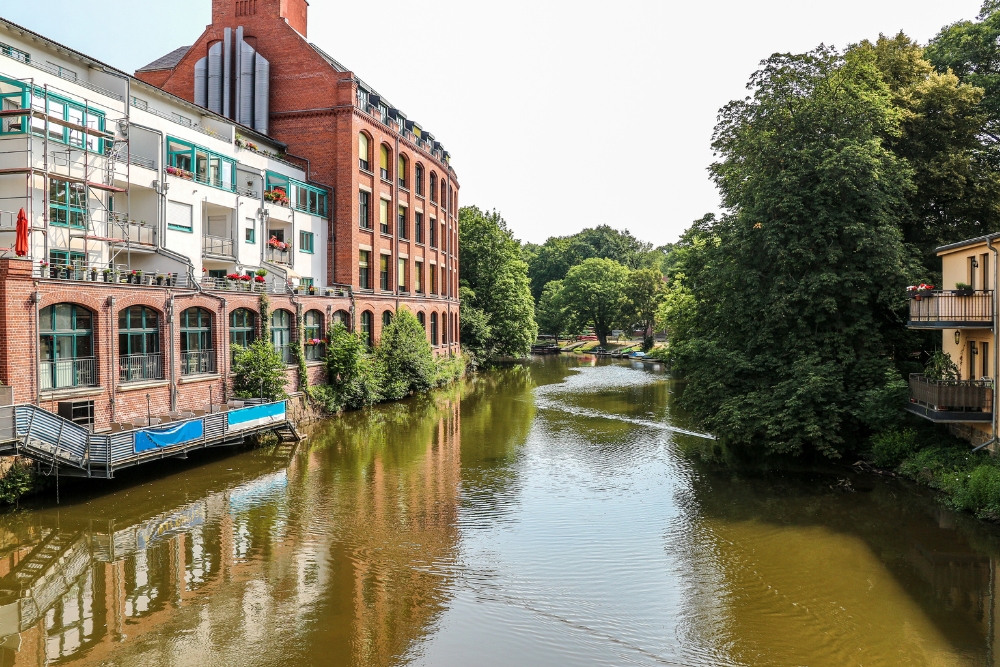
If you want to explore Leipzig, Germany, from a different perspective, you should take a boat trip on the Karl Heine Canal. This artificial watercourse connects the Lindenau harbor with the White Elster River. The canal was built in the 19th century by industrialist Karl Heine, who envisioned Leipzig as a modern city with a network of canals and harbors. 15 bridges span the canal and are navigable with small boats, which you can rent at various places along the canal.
A boat trip on the Karl Heine Canal will take you west of Leipzig, where you can admire the former industrial architecture, the artistic façades, and the green landscapes. You can also see some landmarks, such as the Riverboat stage, the Stelzen House, the Philippus Church, and the “Double M” logo of the Leipzig Trade Fair. Reach the Leipzig New Lake District by boat via the connection to the White Elster River. A boat trip on the Karl Heine Canal is a relaxing and enjoyable way to discover the history and culture of Leipzig.
10 Admire the Architecture of the New Town Hall
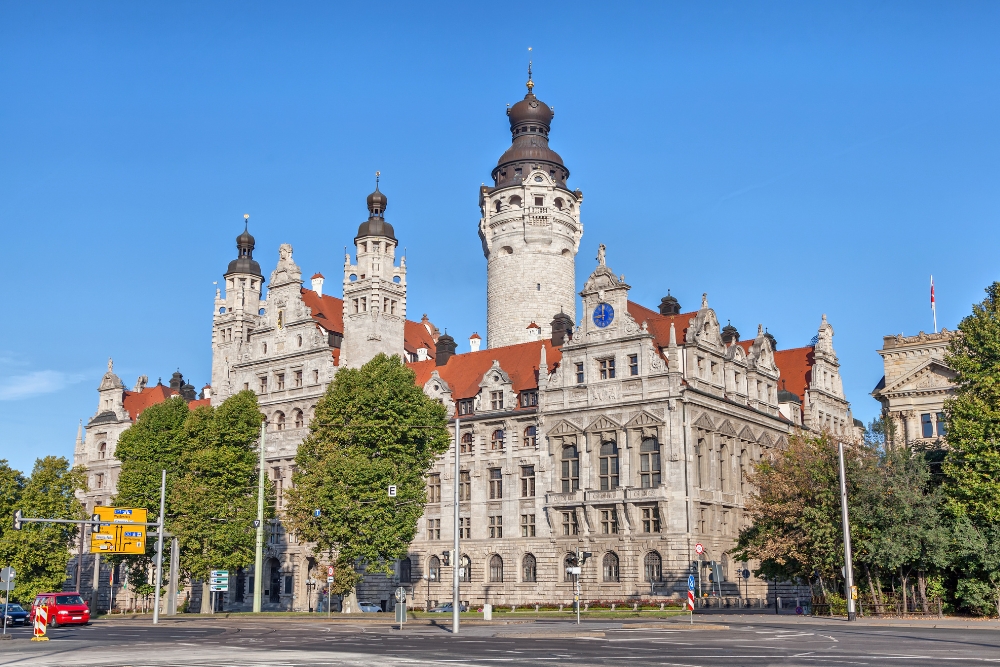
If you are interested in the history and culture of Leipzig, Germany, you should not miss the New Town Hall (German: Neues Rathaus), the seat of the Leipzig city administration since 1905. The New Town Hall stands on the southwest corner of the city center, opposite the newly built Propsteikirche, and is one of the most important municipal halls in all of Germany.
The building was constructed in historicism and features a monumental tower, the tallest city hall tower in Germany, at 114.8 meters or 377 feet. The building also boasts an artistic interior design and an opulently ornamental façade, with statues representing crafts, justice, book art, science, and music.
The New Town Hall is not only a place to admire the architectural vision of Hugo Licht, the architect and city building director of Leipzig but also a place to learn about the history and politics of Leipzig and the region. The building was erected on the site of the old Pleissenburg, a castle that was the scene of the 1519 debate between Martin Luther and Johann Eck and later the seat of the Saxon chancellery. The building also witnessed the mass suicides of Nazi officials during the final days of the Third Reich.
You can explore the interior of the New Town Hall, where you will find various public offices and departments, as well as a hall of fame with a dome decorated with a mosaic of stars. You can also climb the 250 steps to the top of the tower, enjoying a panoramic view of the city and its surroundings. The New Town Hall is open daily from 10 a.m. to 6 p.m., and the admission fee is 3 euros.
11 Appreciate the St. Nicholas Church and its Role in the Peaceful Revolution
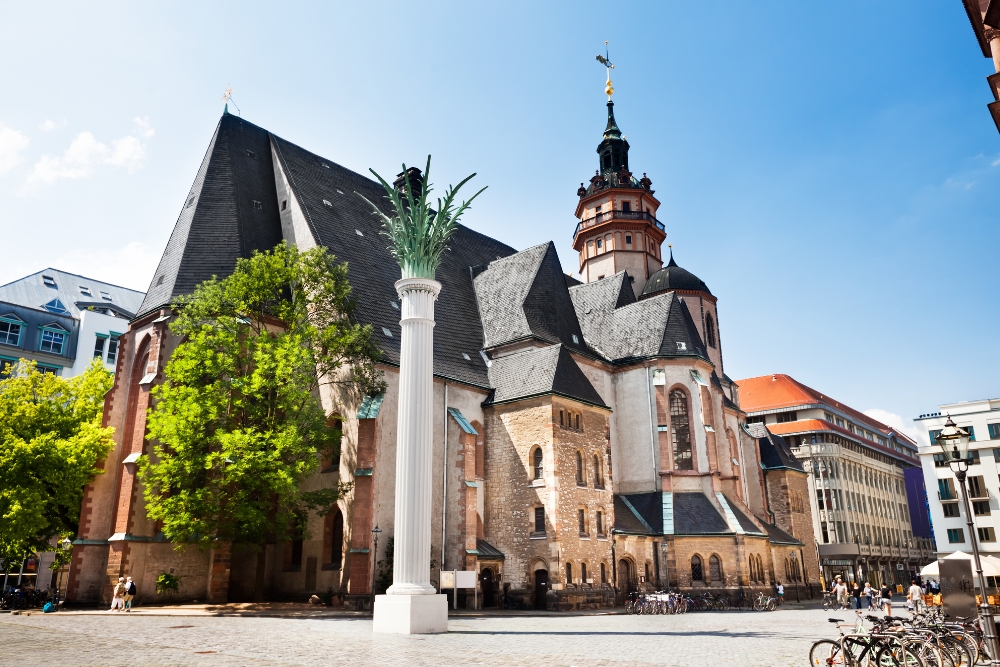
If you are interested in the history and culture of Leipzig, Germany, you should visit the St. Nicholas Church (German: Nikolaikirche), the largest and oldest church in the city. The church was built in the 12th century in Romanesque but later underwent several renovations and additions in the Gothic, Renaissance, Baroque, and Classicist styles. The church is famous for its organ, played by Johann Sebastian Bach, its cantor from 1723 to 1750. The church also contains a rich collection of artworks, such as paintings, sculptures, and stained glass windows.
The church played a crucial role in the Peaceful Revolution of 1989, which led to the Berlin Wall’s fall and Germany’s reunification. Since 1982, the church had been hosting weekly prayers for peace, which attracted people who opposed the communist regime of East Germany. On October 9, 1989, after the prayer service, about 2,000 people left the church and joined tens of thousands of protesters on the streets, demanding freedom and democracy.
The protesters carried candles and chanted, “We are the people” and “No violence.” The security forces did not intervene, and the protest became a turning point in the history of East Germany. The church is still a symbol of the Peaceful Revolution and a place of commemoration and celebration.
12 Indulge in Local Cuisine at Auerbachs Keller
Auerbachs Keller is a historic restaurant in Leipzig, Germany, that dates back to the 16th century. It is famous for being the first place where Mephistopheles takes Faust on their travels in Goethe’s play Faust. The restaurant has five dining rooms, each with its charm and history. You can enjoy the classic Saxon cuisine, such as roast pork, potato dumplings, apple strudel, international dishes, and fine wines.
If you are looking for a cultural, historical, and culinary experience, Auerbachs Keller is the place to go. You can admire the original paintings and sculptures that depict scenes from Faust and learn more about the restaurant’s history and legends from a guided tour. You can also visit the Mephisto Bar, where you can relax with a cocktail and live music. Auerbachs Keller is not only a restaurant but also a museum, a theater, and a meeting point for locals and visitors alike.
13 Catch a Game at Red Bull Arena Leipzig
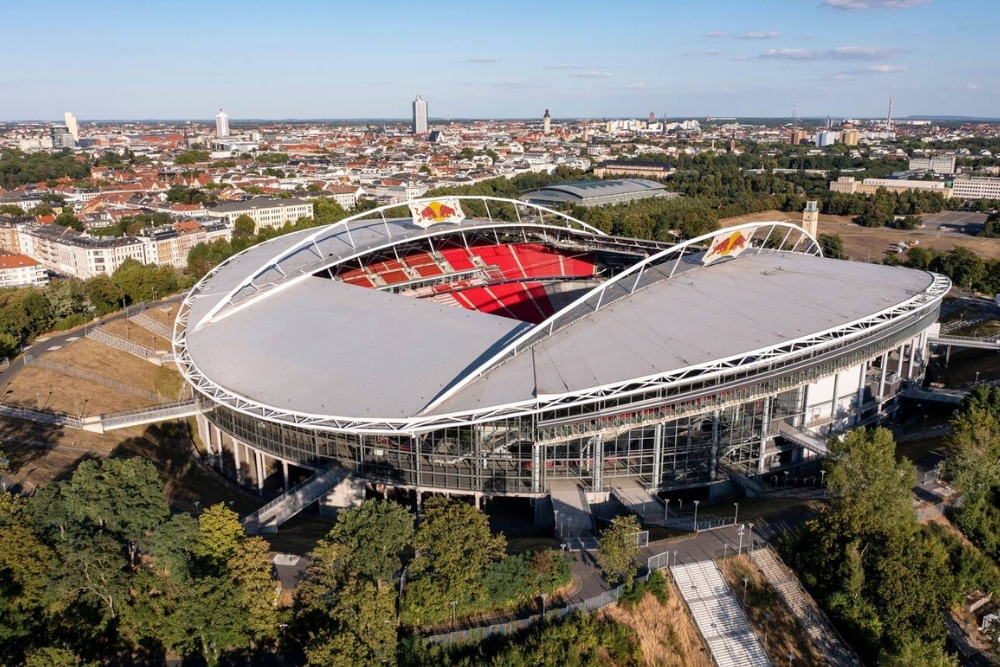
Watching a game at Red Bull Arena Leipzig is a great way to experience the passion and excitement of German football. The stadium, formerly known as Zentralstadion, was renovated and reopened in 2004 and has a capacity of 47,069 spectators. It is the home of RB Leipzig, one of the most successful and popular clubs in the Bundesliga, the top division of German football. You can enjoy the atmosphere and the quality of play, as well as the modern facilities and services of the stadium.
Red Bull Arena Leipzig is also one of the venues for Euro 2024, the 17th edition of the UEFA European Championship, which will take place from 14 June to 14 July 2024. The stadium will host four group matches and one quarter-final match of the tournament, featuring 24 national teams from across Europe. You can witness some of the best players and teams in the world compete for the prestigious trophy and be part of the history and culture of European football.
14 Be Entertained at Krystallpalast Varieté
If you are looking for a unique and memorable experience in Leipzig, you should not miss the opportunity to visit the Krystallpalast Varieté, the only variety theatre in eastern Germany that is open all year round. The Krystallpalast Varieté offers a modern and distinctive take on variety, with in-house productions that feature internationally acclaimed artists, musicians, comedians, and dancers. You will be amazed by the stunning performances of acrobatics, juggling, singing, comedy, and more, all in an elegant and stylish atmosphere.
The Krystallpalast Varieté has a long and rich history, dating back to 1882 when it was the first, largest, and most famous music hall in Leipzig. It was a popular venue for entertainment and socializing, attracting celebrities and royalty alike. Unfortunately, it was destroyed by bombing in World War II and remained closed for decades. It was not until 1997 that it reopened its doors after a careful reconstruction that preserved its original charm and glamour. Today, the Krystallpalast Varieté is a proud part of Leipzig’s cultural heritage and a must-see attraction for visitors and locals alike.
15 Visit And Admire the Market Square of Leipzig
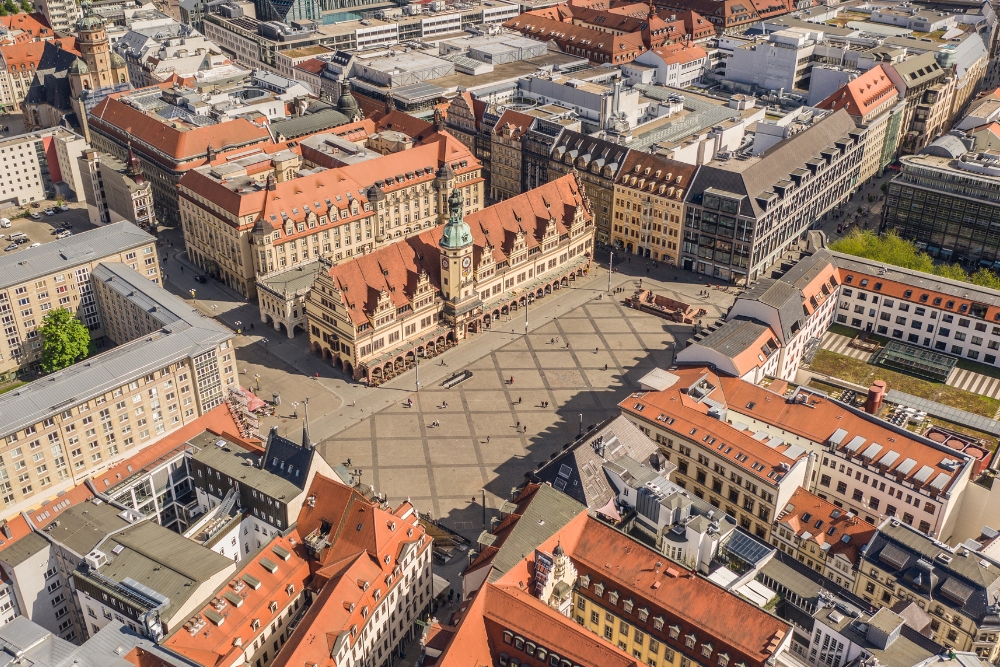
The Market Square (Markt) is the heart of Leipzig and a great place to start your exploration of the city. It is surrounded by impressive historical buildings, such as the Old Town Hall, which houses the Museum of City History, and the King’s House, where Johann Sebastian Bach and Felix Mendelssohn once performed. The square is also the site of various events and markets throughout the year, such as the Christmas Market, the Easter Market, and the Market Days in September. You can enjoy the lively atmosphere and sample local delicacies, such as Leipziger Lerche (a pastry filled with marzipan) and Leipziger Allerlei (a vegetable dish).
The Market Square has a long and rich history, dating back to the 12th century when it became the center of trade and commerce in Leipzig. It was also the scene of important political and social events, such as the execution of Johann Christian Woyzeck in 1824, the first German Workers’ Congress in 1863, and the peaceful demonstrations in 1989 that led to the fall of the Berlin Wall. The square was severely damaged during World War II and was rebuilt in the post-war period. Today, the Market Square is a testament to Leipzig’s resilience and diversity and a must-see attraction for visitors and locals alike.
16 Sample Beer at a Local Leipzig Brewery
Leipzig has a long and proud tradition of brewing and drinking beer. The local specialty is Gose, a sour and salty wheat beer that dates back to the Middle Ages. You can find Gose at several pubs and breweries in Leipzig, such as the Gasthaus und Gosebrauerei Bayerischer Bahnhof, the oldest railway station in the world that has been converted into a brewery and restaurant. There, you can enjoy a range of Gose varieties, such as the original, the raspberry, or the coriander. You can also try some traditional Saxon dishes, such as Leipziger Allerlei or Sauerbraten.
If you want more modern and diverse beer styles, check out some craft beer breweries and bars in Leipzig, such as Cliff’s Brauwerk, Synde Bräu, or Goldhopfen. These places offer a constantly changing selection of beers, from IPAs and stouts to sours and lagers. You can also join a beer tasting or a brewing class and learn more about the art and science of beer-making. Whether you prefer classic or experimental beers, you will find something to suit your taste and mood in Leipzig.
17 Engage with Nature at the Leipzig Riverside Forest
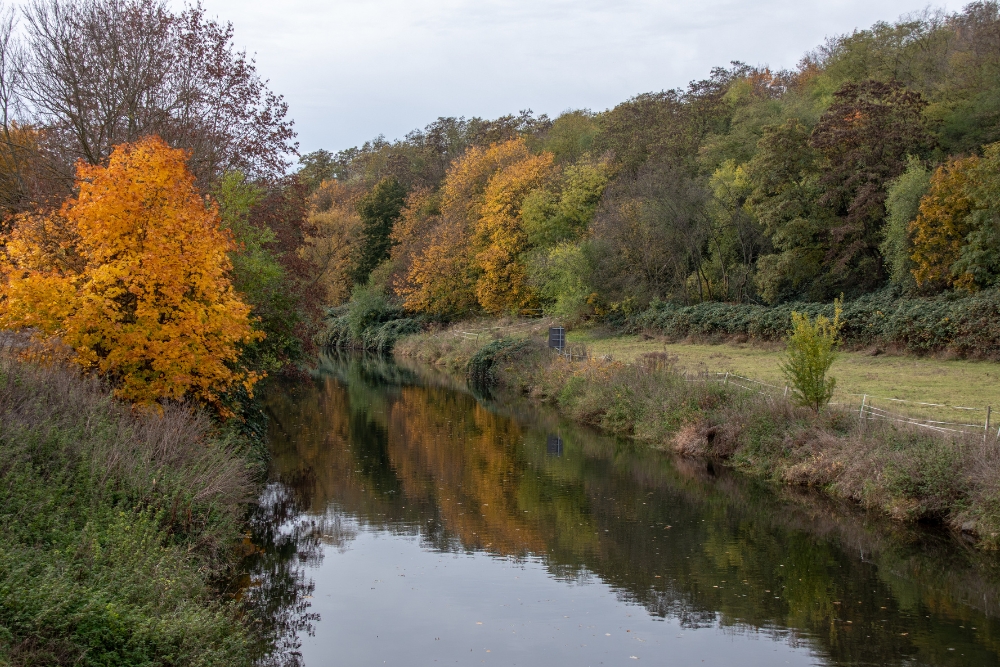
Suppose you are looking for a relaxing and refreshing escape from the city. In that case, you should visit the Leipzig Riverside Forest (Leipziger Auenwald), one of Central Europe’s largest lowland riparian forests. The forest covers about 2500 hectares and lies mostly within the city limits of Leipzig, offering a diverse and beautiful landscape of waterways, meadows, and ancient trees. You can explore the forest on foot, by bike, or by boat and enjoy the sights and sounds of nature. You can also learn more about the history and ecology of the forest at the Auwald Station, a nature education center that organizes guided tours, exhibitions, and events.
The Leipzig Riverside Forest is home to a rich variety of flora and fauna, some endangered or rare. You can spot many kinds of birds, such as the common kingfisher, the black woodpecker, and the European green woodpecker. You can also encounter red squirrels, beavers, deer, and foxes. The forest hosts many plants, such as wild garlic, spring snowflakes, corydalis, and some uncommon species, such as the Geum rivale, a yellow-flowered herb. The forest is also a habitat for many fungi, mosses, and lichens, contributing to the ecosystem’s biodiversity and health. The Leipzig Riverside Forest is a natural treasure that invites you to engage with nature and discover its wonders.
18 Investigate the Egyptian Museum Leipzig
If you are fascinated by the ancient civilization of Egypt, you should not miss the chance to visit the Egyptian Museum Leipzig, the largest and most important university collection of its kind in Germany. The museum displays around 7000 objects, covering four millennia of Egyptian culture, from the Old Kingdom to the Roman period. You can admire statues, reliefs, sarcophagi, funerary figurines, vessels, ostraca, and a mummy sarcophagus that started the collection in 1840. You can also learn more about the museum’s history and archaeology, founded by the famous Egyptologist Georg Steindorff, who led several expeditions to Egypt and Nubia.
The Egyptian Museum Leipzig is located in the Kroch Tower, the oldest skyscraper in Leipzig, built in 1928 in an Art Deco style. The museum occupies four floors of the tower, each dedicated to a different theme: gods and goddesses, life and death, writing and communication, and daily life. The museum also offers guided tours, lectures, workshops, special exhibitions, a library, and a gift shop. The museum is open from Wednesday to Sunday, and the admission fee is 5 euros for adults and 3 euros for students and children.
19 Experience Leipzig’s Nightlife in the Drallewatsch District
Leipzig’s nightlife is wild and thriving, and the best place to experience it is the Drallewatsch District. This is the area around the Barfußgässchen, where you can find over 30 bars, pubs, and clubs to suit your mood and taste. The name Drallewatsch comes from an old Saxon word that means “to have a good time” and “to stroll from pub to pub”. This is exactly what you can do in this lively and historic part of the city, where you can enjoy live music, local beer, and international cuisine.
The Drallewatsch District is a hotspot for nightlife and a place where you can admire the architecture and culture of Leipzig. The district is located in the oldest part of the city, where you can see buildings from the Renaissance, Baroque, and Wilhelminian periods. You can also visit the Old Town Hall, the Church of St. Thomas, and the New Town Hall, all within walking distance from the bars. The Drallewatsch District is a must-visit for anyone who wants to experience Leipzig’s nightlife and history.
20 Skate at the Eistraum Leipzig Ice Skating Rink
Skate at the Eistraum Leipzig Ice Skating Rink is a winter event that takes place every year from January to March on the Augustusplatz, the largest square in Leipzig. The event features Germany’s largest round ice skating rink, where visitors can glide on the ice and enjoy the festive atmosphere. The rink is surrounded by white huts and pagodas, small bars, a covered beer garden, fire pits to warm up, and an ice stock rink for curling enthusiasts. The event also offers a giant Ferris wheel, which gives a panoramic view of the city from 45 meters high.
The Eistraum Leipzig Ice Skating Rink is a fun activity and a way to experience the history and culture of Leipzig. The Augustusplatz is the heart of the city, where many important buildings and monuments are located, such as the Opera House, the Gewandhaus, the University, and the Monument to the Battle of the Nations. The square has witnessed many historical events, such as the peaceful demonstrations that led to the fall of the Berlin Wall in 1989. The Eistraum Leipzig Ice Skating Rink is a must-do for anyone who wants to skate at the center of this vibrant and historic city.
21 Explore the Belantis Amusement Park
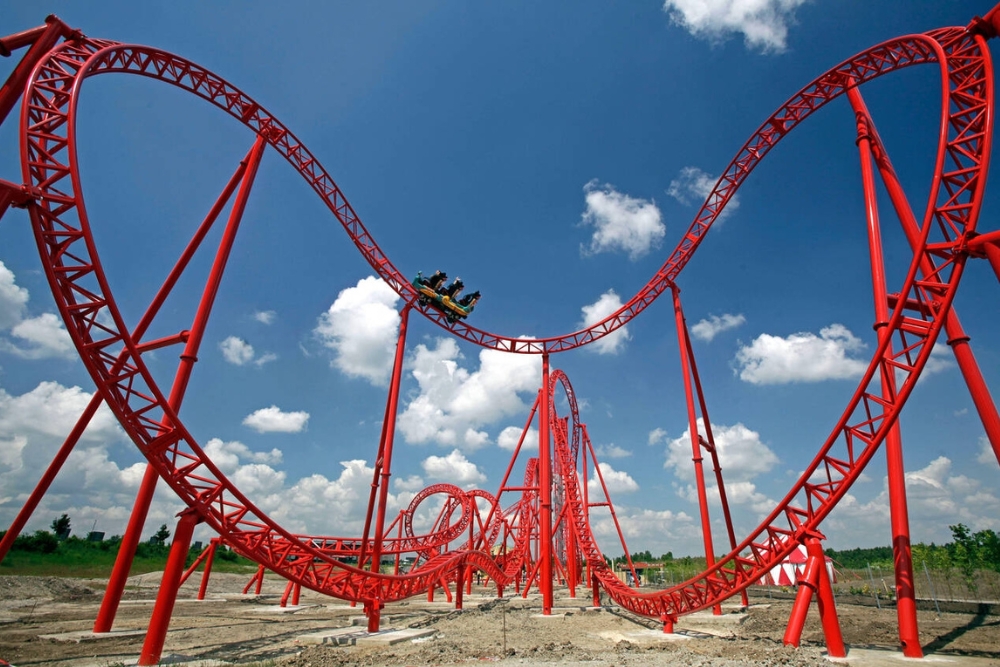
Belantis Amusement Park is the largest theme park in eastern Germany, covering 27 hectares and offering over 60 attractions, including four roller coasters. The park is divided into eight themed areas, such as “Valley of the Pharaohs”, “Beach of the Gods”, “Island of the Knights”, and “Prairie of the Indians”. Each area has rides, shows, and attractions that reflect the culture and history of the theme. Visitors can experience the thrill of the Huracan roller coaster, which has five loops and a steeper-than-vertical drop, or the Fluch des Pharao water ride, which starts from a 38-meter-high pyramid.
Belantis Amusement Park is a fun destination for learning and exploring. The park was built on a former opencast mine and showcased the transformation of the landscape and the environment. The park hosts various events and festivals like Halloween, Christmas, and Medieval markets2. Belantis Amusement Park is a must-visit for anyone who wants to explore the Belantis worlds and have a good time.
22 Taste Specialty Foods at the Plagwitz Market Hall
Plagwitz Market Hall is a historic building that was once a slaughterhouse and a cattle market but now hosts a variety of specialty food stalls, cafes, and restaurants. The market hall is located in the Plagwitz district, a former industrial area transformed into a creative and cultural hub. Visitors can taste local and international delicacies, such as organic bread, cheese, sausages, vegan dishes, sushi, and Turkish cuisine. The market hall also offers a range of events, such as cooking classes, wine tastings, and live music.
Plagwitz Market Hall is not only a gastronomic destination but also a place to explore the history and culture of Leipzig. The market hall was built in 1891 and is one of the oldest buildings in the city. It has witnessed the city’s changes and challenges, such as the World Wars, the communist regime, and the reunification. The market hall is also a part of the Plagwitz Industrial Heritage Trail, which showcases the architectural and technological heritage of the district, such as the Karl-Heine-Canal, the Spinnerei, and the Westwerk. Plagwitz Market Hall is a must-visit for anyone who wants to taste specialty foods and discover Leipzig’s industrial past and creative present.
23 Walk Through the Scenic Südfriedhof Cemetery
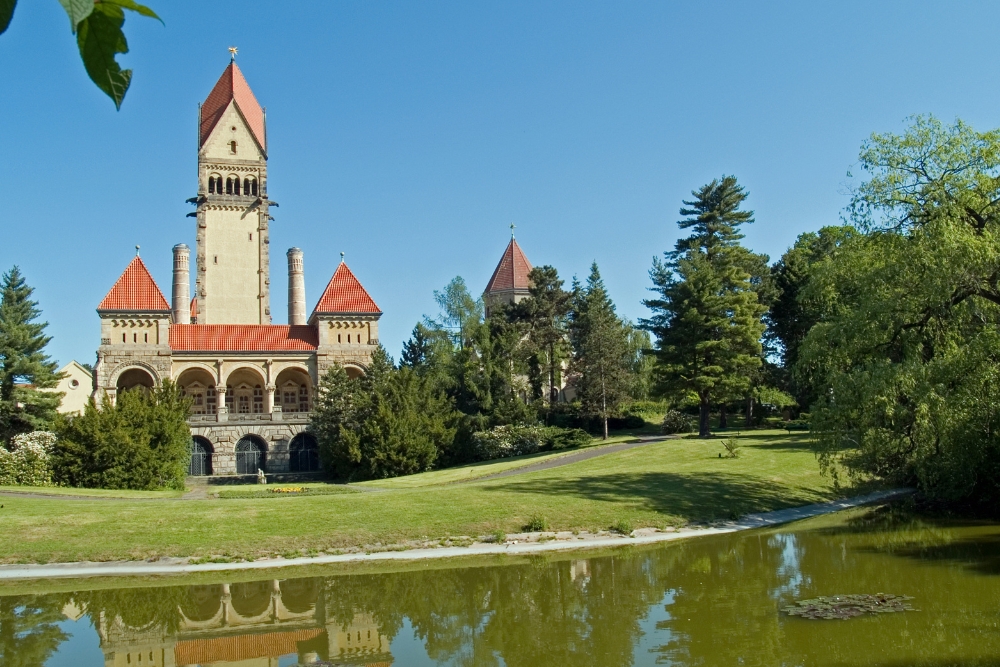
Walking through the scenic Südfriedhof Cemetery is a unique way to experience the history and culture of Leipzig. The cemetery, which covers 82 hectares, is one of the largest in Germany and the oldest in the city. It was opened in 1886, and since then, it has been the resting place of many famous Leipzigers, such as composers, writers, scientists, and politicians. Visitors can admire the impressive grave monuments, the neo-Romanesque chapel, and the crematorium, examples of Leipzig’s architectural heritage. The cemetery is also a park landscape, with diverse flora and fauna and a linden leaf-shaped layout that reflects the Slavic name of Leipzig: “The place where the lime trees stand.”
24 Revel in the Greatness of the Leipzig Central Station
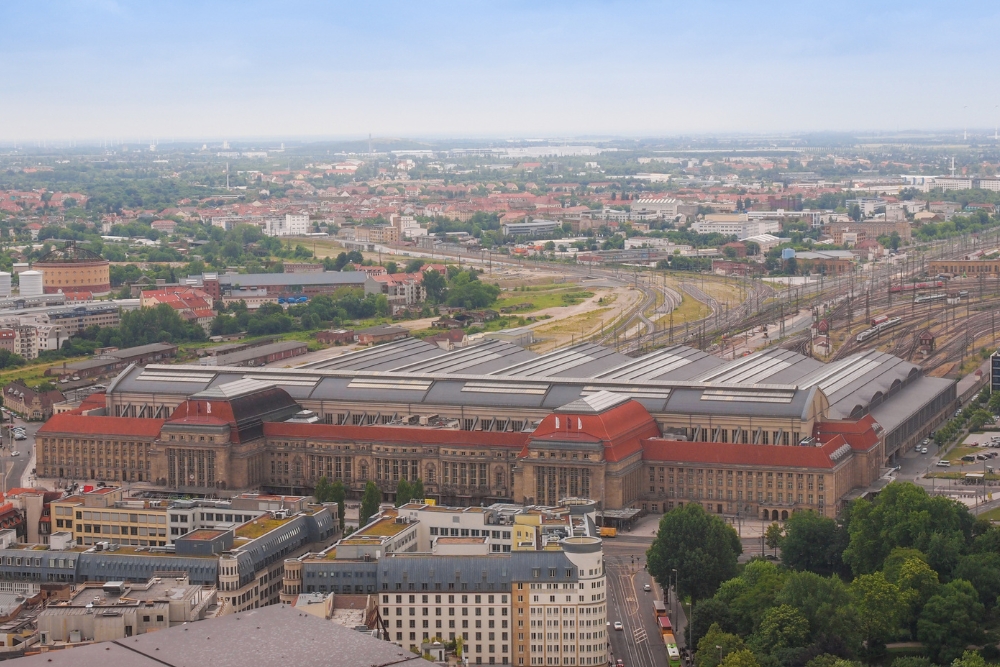
The Leipzig Central Station is the largest terminal station in Europe and one of the city’s most impressive landmarks. It was built between 1909 and 1915 and consisted of two separate stations for the Saxon and Prussian railways. The station has 26 platforms and covers an area of 83,460 square meters. It survived the World Wars and the communist regime and was extensively renovated and modernized in the 1990s. In 2013, the City Tunnel, a new underground railway line, was opened under the station, connecting it to other parts of the city and the region123.
The Leipzig Central Station is a transportation hub and a shopping and entertainment center. It hosts over 140 shops and restaurants on three levels, offering a variety of goods and services. The station is open from Monday to Saturday, from 9:30 am to 10:00 pm, and some of the businesses are also open on Sundays, from 1:00 pm to 6:00 pm.
25 Visit Colditz Castle Near Leipzig
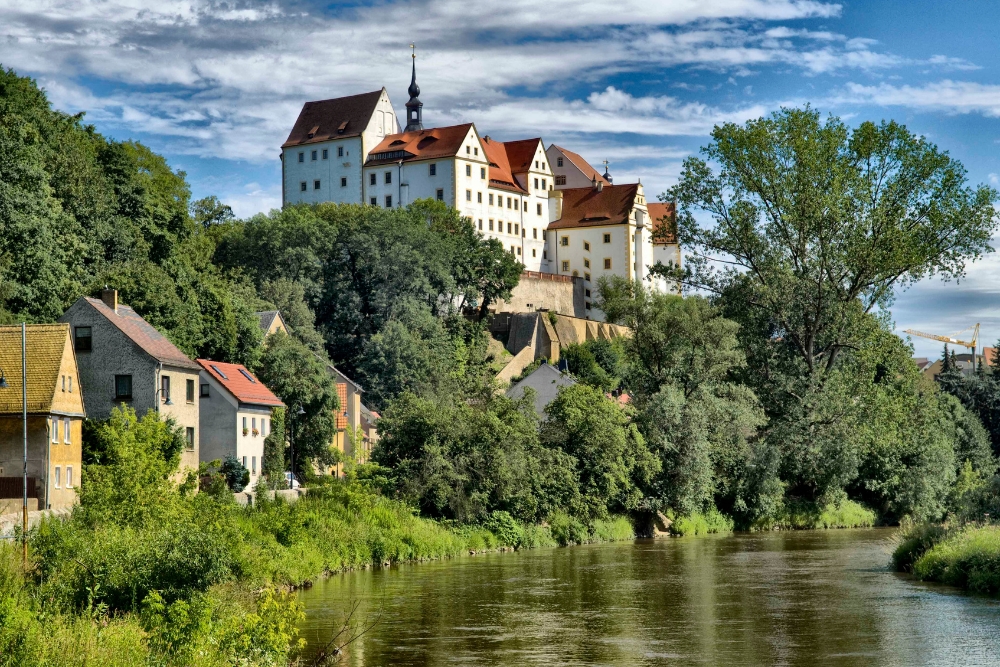
Colditz Castle is a Renaissance castle in Colditz near Leipzig, Dresden, and Chemnitz in the state of Saxony in Germany. It is situated on a hill spur over the river Zwickauer Mulde, a tributary of the River Elbe. The castle was built in the 12th century by the Lords of Colditz and later became a royal residence of the Wettin dynasty. It has a rich and varied history, having served as a hunting lodge, a wildlife park, a psychiatric hospital, and most famously, a prisoner-of-war camp during World War II.
Today, Colditz Castle is a popular tourist attraction, offering guided tours, exhibitions, concerts, and events. Visitors can explore the castle’s architecture, gardens, and museum, which showcases the many escape attempts and ingenious contraptions made by the Allied prisoners of war. The castle also hosts a European Youth Hostel, where guests can enjoy a comfortable stay and a unique atmosphere. Colditz Castle is a place of historical and cultural significance and a destination for adventure and discovery.
Final Thoughts About Things To Do in Leipzig
In conclusion, Leipzig offers diverse activities and attractions catering to different interests and preferences. Whether you are a history buff, a music lover, or a nature enthusiast, this city has something for everyone. From exploring fascinating historical sites like the St. Thomas Church and the Battle of Nations Monument to immersing oneself in the vibrant music scene at the Leipzig Gewandhaus and the Bach Museum, there is no shortage of cultural experiences. Leipzig’s beautiful parks and gardens also provide ample opportunities for relaxation and outdoor activities. Overall, a visit to Leipzig promises an enriching and enjoyable experience that will leave you with lasting memories.
Photos: Canva Pro, Alamy.

